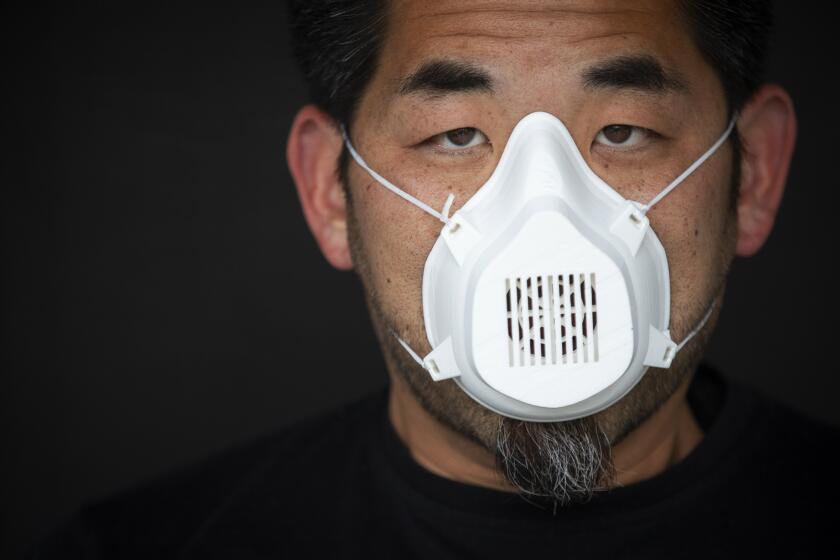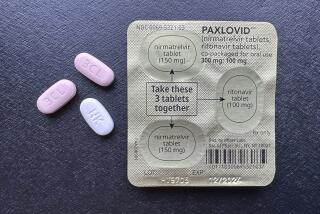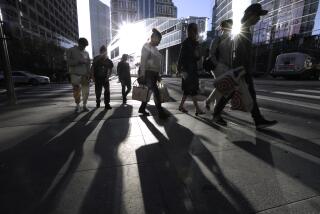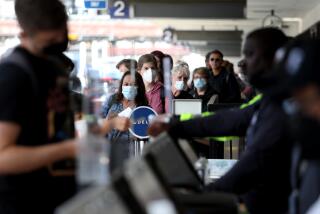Commentary: Past pandemics changed the design of cities. Six ways COVID-19 could do the same
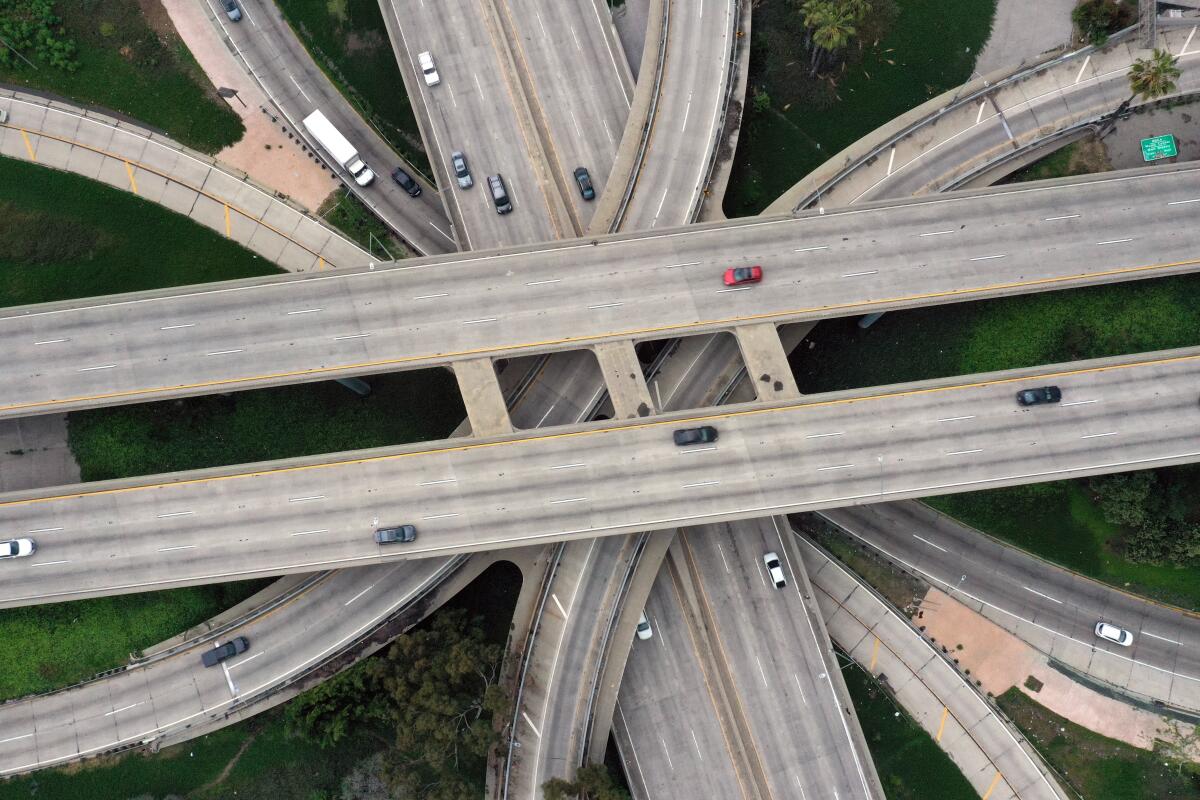
- Share via
Although pandemics have long been a tragic scourge on our cities, they’ve also forced architecture and city planning to evolve. The bubonic plague, which wiped out at least a third of Europe’s population in the 14th century, helped to inspire the radical urban improvements of the Renaissance. Cities cleared squalid and cramped living quarters, expanded their borders, developed early quarantine facilities, opened larger and less cluttered public spaces and deployed professionals with specialized expertise, from surveyors to architects.
Likewise, 18th century yellow fever and 19th century cholera and smallpox outbreaks helped to catalyze innovations like broad boulevards, citywide sewer systems, indoor plumbing, disease mapping and the early suburbs.
In the 20th century, tuberculosis, typhoid, polio and Spanish flu breakouts prompted urban planning, slum clearance, tenement reform, waste management and, on a larger level, Modernism itself, with its airy spaces, single-use zoning (separating residential and industrial areas, for instance), cleaner surfaces (think glass and steel) and emphasis on sterility.
It’s clear that the coronavirus will have — and is already having— a similarly profound effect on today’s built world. It’s shaking loose notions of what is “normal” in a field still employing many of the same techniques it did a century ago. And it’s pushing forward promising but still emerging currents, from prefabrication to telecommuting.
Here is a look at six methods playing a prominent role in the age of COVID-19. If history is a guide, their temporary rise likely will become permanent, at least in some form.

Modular construction
As the pandemic has grown, the most pressing need in architecture has been speed: the quick creation of emergency facilities like hospitals, quarantine centers, testing sites and temporary lodgings. That demand has prompted an overwhelming response, much of it employing techniques outside the mainstream.
A good example is modular construction — prefabricating standardized components in a factory, then assembling them quickly on site. It’s long been touted as a fast, flexible, less wasteful alternative to traditional building.
The normal time to build a hospital is well over two years, but in February builders in Wuhan, China, the pandemic’s epicenter, used modular construction for two hospitals — the 1,000-bed Huoshenshan facility and the 1,600-bed Leishenshan Hospital — in about two weeks. The structures, created by thousands of workers and filled with advanced medical infrastructure, consist of prefabricated panels placed into steel skeletons above concrete foundations.
Legacy buildings of Los Angeles County Museum of Art are being torn apart for a new Peter Zumthor design. The planned gallery interiors remain a mystery.
A variation on this model is FEMA’s National Mobile Disaster Hospital, a collection of ready-to-go, portable tents and modular structures that can be trucked to disaster sites and set up in 48 to 72 hours. These units have already been dispatched to California, Washington and New York.
Even more nimble and efficient modular systems are close to realization. Italian architect and MIT professor Carlo Ratti has designed intensive-care pods within a shipping container called CURA, short for Connected Units for Respiratory Ailments. The prefabricated pods, connected by inflatable corridors and fitted with biocontainment systems, can be set up by a small number of workers in just a few hours. The first CURA prototype is being installed at a hospital in Milan.
U.S. company Jupe is creating the “world’s first standalone intensive care unit,” an affordable structure (the company claims its units are 1/30th the cost of a hospital room) whose interchangeable modular components can be flat-packed and deployed via trucks or cargo ships to hospitals. Jupe is building solar or battery-powered prototypes — including portable ICUs, off-grid recovery units and sleeping areas for medical professionals — at its El Paso, Texas, manufacturing facility.
Modular construction offers not just speed but customization. Flexible components like movable walls can help buildings adapt to needs. A hospital, for instance, could shift or enlarge its spaces for treatment and quarantine, or open up new spaces to accommodate ICU beds.
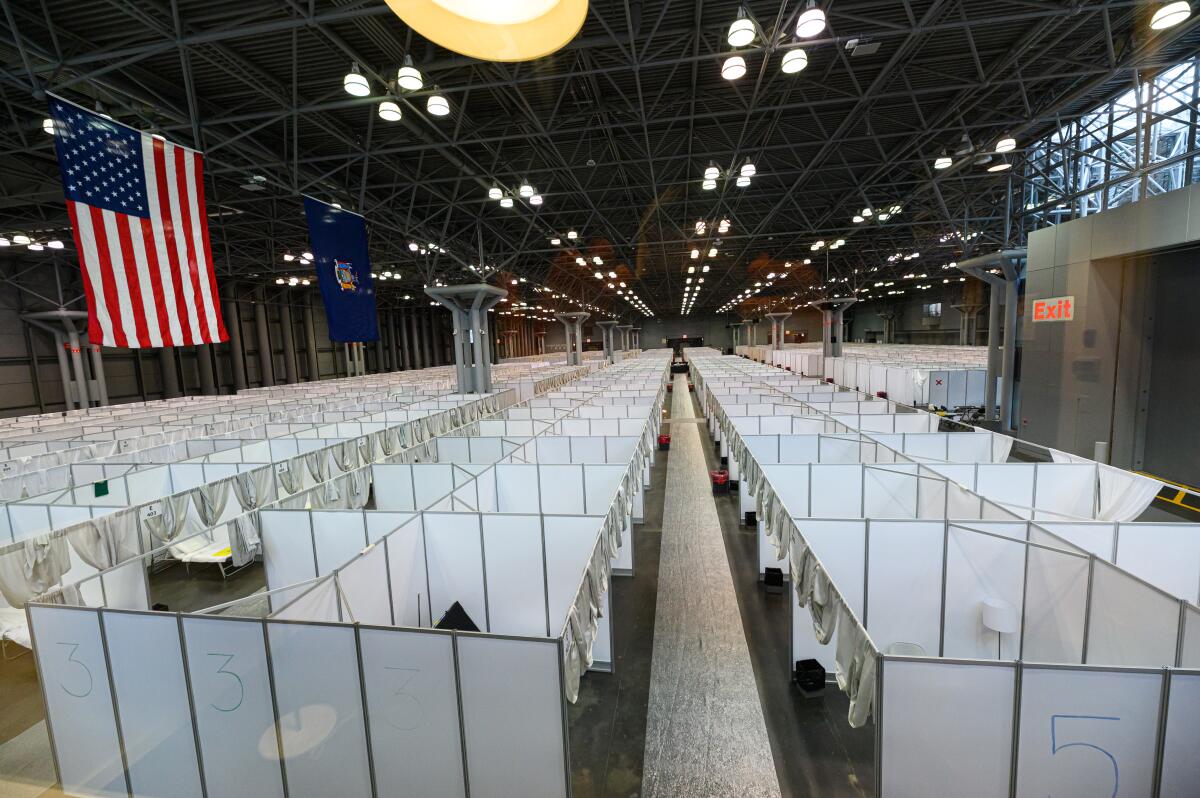
Adaptive reuse
Also thrust into the spotlight is the use of existing buildings to serve newly relevant purposes. Increasingly popular before COVID-19, adaptive reuse is regarded as a sensitive, sustainable approach for our aging cities. And it’s proving to be the most efficient way to create emergency facilities.
New York’s Javits Center has become a 2,900-bed hospital, the New Orleans Convention Center is a 3,000-bed facility, and Chicago’s McCormick Place is becoming a 3,000-bed complex. Sports facilities-turned-medical facilities include London’s ExCel center, Seattle’s CenturyLink Field and New York’s Billie Jean King National Tennis Center, which is serving as a hospital and a meal distribution center in Queens.
Design teams shift their focus and volunteer for a USC-led 3D-printing campaign to create masks and other PPE in short supply for medical personnel.
Less conventional conversions are ramping up. Vanderbilt University is converting a parking lot into an overflow medical facility, and FEMA is converting a Wall Street high-rise into additional bed space. The Navy deployed the Comfort and the Mercy, supertankers converted into floating hospitals, to New York and Los Angeles, respectively. The U.S. Army Corps of Engineers is converting hotels, dormitories, sports arenas and other buildings into temporary hospitals.
It’s clear that we’ll need more efficient, effective and flexible reuse plans for future crises. Perhaps cities will require them for construction approval? And open-source guides, like the one that Cambridge-based MASS Design Group is sharing to help other designers retrofit spaces for infection control, will likely play a major role in improving emergency reuse moving forward.
Lightweight architecture
In disaster response, lightweight fabric construction is often preferable for its speed and portability. In South Korea designers developed a system of tent-like drive-through testing centers that have been emulated worldwide. Drawing from its experience with viruses such as SARS, and inspired by the fast-food drive-thru, designers developed a kit-of-parts that has been deployed in more than 600 locations in a matter of weeks.
Workers from Milan to New York’s Central Park are assembling tent structures to create field hospitals, adapting a model from wartime to this biological battle. Fabric structures from UC San Francisco to a tent village in Lima, Peru, are being employed as triage and emergency room extensions, waiting and treatment areas, and, sadly, as temporary morgues.
Inflatable fabric structures can be easily transported and erected with just a compressor. In Mexico, the government of the state of Hidalgo has set up a 19,400-square-foot inflatable hospital in Pachuca, prepared to see up to 80 COVID-19 patients a day.
The healthy building
While trapped at home during quarantine, you may have become hyper aware of the shortcomings of your personal surroundings. Expect more people to embrace the Healthy Building Movement, an approach to improving health through strategies like greater natural light, improved ventilation, fewer toxic substances and the incorporation of plants and other natural materials. Think skylights, large windows, rooftop terraces, balconies and courtyards. Spaces for exercise and meditation could become standard along with home offices.
The most valuable healthy building tool during the COVID-19 outbreak has been advanced ventilation, particularly in hospitals. These technologies include negative air pressure (which keeps pathogens from spreading to other parts of a hospital), displacement ventilation (in which cooler air enters from below and lifts contaminants), clean air ventilation (which brings in fresh air, rather than recirculating existing air), and various filtration and humidity systems.
These kinds of techniques will likely become standard in hospitals after the pandemic, but might they expand to wherever people congregate, like homes, offices, factories, warehouses and schools? They could save lives where occupants don’t have a choice about social distance: prisons, homeless shelters and refugee facilities. Perhaps they could be complemented by germ-resistant strategies like antimicrobial polymer surfaces, copper alloy surfaces (which naturally kill germs and viruses) and flexible spatial designs to accommodate social distancing.
Telecommuting and small-city living
If we zoom out to the urban realm, we quickly find other “alternative” methods moving mainstream in the midst of this crisis. The most obvious is telecommuting, which has temporarily come to dominate our work and social lives.
Distance communication could bring major change to cities and suburbs. The time savings of not commuting from home, the increased familiarity with telemedicine and distance learning, the convenience of online shopping and the cultural connection of online entertainment (virtual museum visits, livestreams of concerts, recorded theater) — these all could change our long-term habits, dramatically cutting traffic, sprawl and pollution. Have you seen the pictures of our cities from space lately?
Increased acceptance of digital connectivity could bolster smaller cities and rural areas, where untethered workers, a.k.a. digital nomads, could become more prevalent. Coronavirus refugees from New York and other large metropolises are suddenly living and working from far away. Some inevitably will stay, drawn to a new lifestyle or wary of returning to places they now consider dangerous.
The pandemic’s potency in the largest, densest metropolitan areas raises questions about the sustainability of so-called megacities already struggling with scant affordable housing, growing economic inequality, sprawl and aging infrastructure. The future is still unclear, but perhaps we will see a shift in regional balance toward less populated places.
The town square, reconsidered
Another potential change, one that’s somewhat paradoxical in this germophobic time: With social distancing dominating our lives, it’s becoming clearer how much we crave human contact and community interaction. Yes, we’ll all be nervous to socialize for a while, but when this pandemic is over, the call for connection will be that much greater.
How this will play out in the urban realm is an open question. Some cities — particularly those in dire financial straits — may neglect public space in favor of other priorities. But I would argue (and others support this theory) that we will eventually devote more resources to help us congregate and to strengthen our frayed community bonds, be it through parks, plazas, promenades, community centers or streets turned over to pedestrians. Many of us are getting used to walking more, facing less interference from cars and finding nooks without too many people. Several cities have closed (or partially closed) streets to cars to aid residents with social distancing. Perhaps some streets could remain that way?
We’ll need to think more carefully about how to keep these spaces safe in emergencies. Perhaps the digital systems now being used to track and contain the virus — like the one being developed by Apple and Google — could play a role? They could, among many other things, assess potential threats where we congregate, act as early warning systems, help us maintain social distance, quickly alert authorities to close spaces, or ensure that those infected are not out socializing.
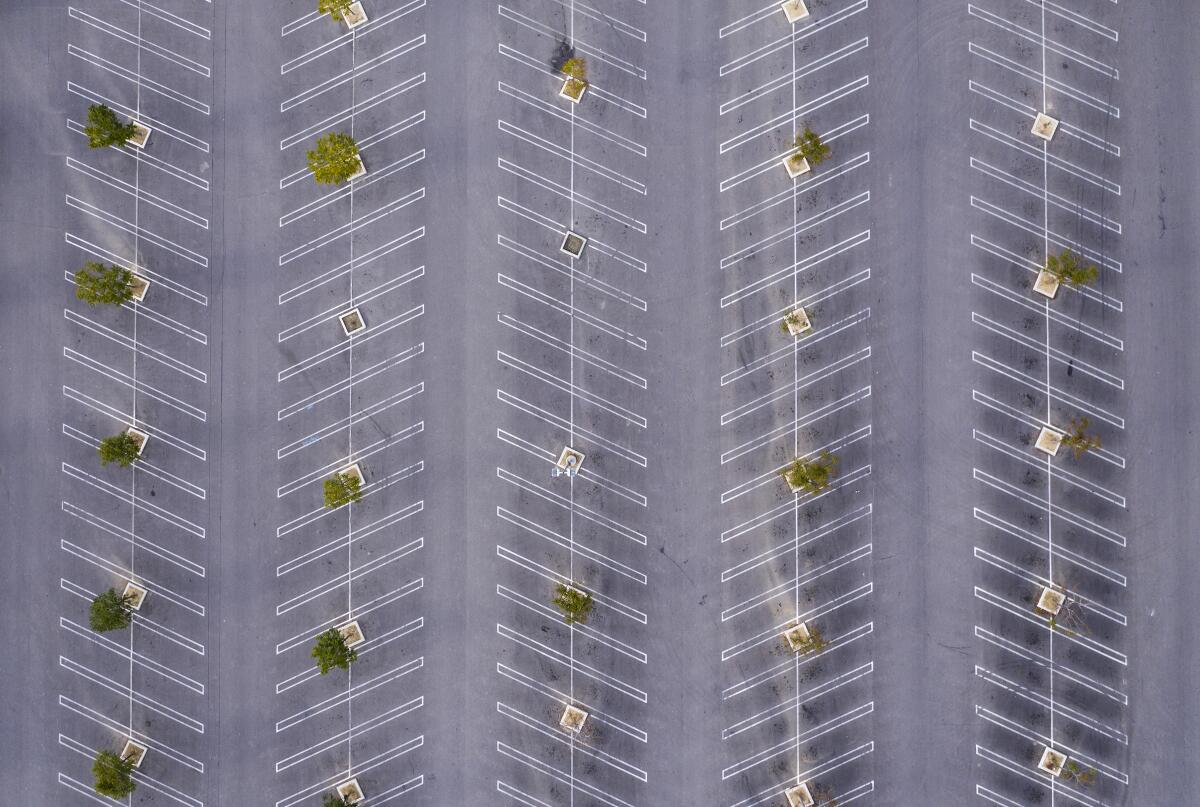
Building beyond COVID
We’re not going to scrap how we’ve been building architecture and cities. But as our world moves faster and becomes more interconnected, we need to embrace a new tool kit of options that are more flexible, holistic and responsive. Yes, to better address pandemic response. But also to help tackle urgent issues like climate change, terrorism, migration, social disconnection and inequality, community disintegration, housing shortages, traffic, pollution, sprawl and over-development — not to mention problems we haven’t anticipated. Our architectural and urban planning systems, developed in a vastly different time, are long overdue to address many of these complex contemporary issues.
The time to reassess our built world is now, not after the next catastrophe. What if we more effectively employed modular building tools not just to face pandemics or natural disasters, but also to create less costly, more quickly built buildings in general, from pop-up shops to affordable housing? What if we broadened our sense of what a building could be and turned vacant malls into schools, or vacant offices into transitional housing for the homeless? What if we harnessed telecommuting as not just a way to social distance, but a way to help employees achieve work-life balance — spending more time with family, or exercising, or doing any number of things that would make them healthier?
The coronavirus has reminded us that we can see many challenges coming if we pay attention and listen to the experts. We can’t wait until we’re overwhelmed. We need to be proactive, not reactive. Do we want our response to be as flat-footed as our country’s initial response to COVID-19? Let’s learn from this tragedy. Let’s find the silver lining.
Is he the Boba Fett of architecture? How architect Ma Yansong is reshaping the look of L.A., and not just with George Lucas’ spaceship of a museum.
More to Read
The biggest entertainment stories
Get our big stories about Hollywood, film, television, music, arts, culture and more right in your inbox as soon as they publish.
You may occasionally receive promotional content from the Los Angeles Times.
![[Monday April 13, 2020] Demolition crews work amid the coronavirus pandemic on leveling LACMA's Bing Theater, one of four buildings that will be demolished to make way for a new structure designed by Swiss architect Peter Zumthor. This view is from Wilshire Boulevard to the north. The pitched eave at left is the atrium designed by Hardy Holzman Pfeiffer Assoc. in the 1980s; to the right is the Japanese Pavilion by Bruce Goff.](https://ca-times.brightspotcdn.com/dims4/default/443ab43/2147483647/strip/true/crop/4032x2688+0+336/resize/840x560!/quality/75/?url=https%3A%2F%2Fcalifornia-times-brightspot.s3.amazonaws.com%2Ff8%2F6c%2F98c6e7a64f8baadab9feef0ea377%2Fphoto-apr-13-9-43-57-am.jpg)
